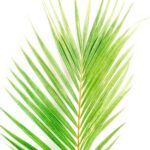Introduction
Grass clippings are organic materials from lawns or other turf that can be used as mulch for vegetable gardens. Grass clippings contain essential nutrients such as nitrogen, phosphorus, and potassium that can naturally fertilize the soil when they decompose. Grass clippings are easy to obtain and provide an inexpensive source of mulch. When used correctly, grass clippings can help to improve the texture of soil and reduce weeds in a vegetable garden.
In addition to being a nutrient-rich source of mulch, grass clippings can also help moderate temperature fluctuations in the garden by protecting against excessive heat or cold stress on plants. Additionally, grass clippings form a protective layer around the soil which helps it retain moisture more efficiently while discouraging evaporation. This is especially beneficial during dry spells and helps to keep your crops better hydrated with less supplemental watering needed.
But before using them as mulch for your veggie patch there are some safety considerations you must remember. Be sure not to use grass clippings that have been treated with pesticides or herbicides, as these toxic chemicals will end up in your edibles and could potentially harm you if ingested. Additionally, avoid using fresh grass clippings directly on seedlings due to their high moisture levels which could encourage fungal growth. Finally, ensure that the grass has had enough time to break down before adding it around tender plants as freshly cut clippings may smother young roots or block their access to light and water resources.
Benefits
Grass clippings can be an extremely effective mulch for vegetable gardens. The soil fertility, water conservation, and weed control benefits of adding grass clippings as a mulch are well worth considering.
When you set up a layer of grass clippings on top of the soil in your vegetable garden, it helps to add additional organic material back into the soil. This helps to restructure the compacted soils in which vegetables often grow, allowing for more ease of root penetration and improved hydrologic flow throughout the soil profile. This enhanced aerobic environment encourages beneficial microbial growth and improved nutrient cycling. As organic matter decomposes from within the layered clippings, this provides a slow-release form of nitrogen that is available for plant uptake enabling healthy vegetative growth over time.
In addition to fertility benefits, grass clipisngs can also help with water conservation when used as a mulching layer for vegetable gardens. The uppermost layer of vegetation acts like an attractive blanket by minimizing water loss from evaporation and reducing surface runoff, helping to ensure more consistent soil moisture levels through dry periods and acting as insulation against drastic temperature changes that often cause plants stress.
Finally, another great benefit with using grass clippings is the suppression of weeds that they can provide by blocking light availability, while also serving as a physical barrier between emerging weed seeds and ready access to ideal growing conditions at the same time.
Collection and Preparation
Regularly collecting and processing clean grass clippings into a mulch is an excellent way to use the natural resources already present in your yard. Before you begin, it is wise to check the fertilizer that was used on your lawn; if it was synthetic, do not use it in your vegetable garden. Once you have ensured your grass clippings are safe to use, follow these steps:
1. Use a mower with a collection bag to regularly and efficiently collect your grass clippings while mowing.
2. To ensure maximum freshness and to reduce nuisance odors from bacteria overgrowth, immediately spread the collected clippings onto a large tarp or large area of bare ground for drying. This will also help circularly clip the length of the clippings so that applying the mulch will be easier and more efficient.
3. Once dry and ready to be used, rake the clippings together into piles or bags according to how much is needed for each application. Spread out the amount of need around your vegetables as uniformally as possible; this will help maximize water absorption while preventing weed growth in your garden bed.
4. Reapply when necessary; composted mulches should be replaced at least every three months for proper fertilizing and nutrient replacement within the soil profile of your vegetable plot/beds. Doing so demonstrates continuing commitment and care for vegetative health which aids root vitality and delicious vegetable fruition!
Safety Issues
There are potential safety risks associated with using grass clippings from a chemically-treated lawn as mulch in a vegetable garden. The chemical treatments used on many lawns can contain harmful compounds such as fertilizers, pesticides, and herbicides that could seep into the soil of your vegetable garden if the treated grass clippings are used. This uptake of potentially harmful chemicals can contaminate the vegetables grown in your garden, making them unsafe for consumption. Additionally, the use of treated grass clippings has been shown to reduce the microbial activity in soil and inhibit fertility due to their high water content.
To avoid these safety risks, it is recommended to research what chemicals were used on the lawn to determine whether it is safe for use in your garden. If in doubt, it is best not to use these grass clippings as mulch and opt for an alternative organic mulch such as shredded leaves or bark chips instead. Utilizing composting techniques or compost tea may also be beneficial when attempting to build healthy soil in a vegetable garden and serve as safer alternatives than chemically-treated lawn mulch.
How Much to Apply
For a vegetable garden, you will need about 5 inches of grass clippings for mulching. The actual amount may vary depending on the size of your garden and the type of vegetables you are growing. To calculate your amount, take the total amount of square footage in your garden and divide it by 27 to get the required number of yards to cover that area with mulch. Once you have determined how many yards of grass clippings you’ll need, break down that number by measuring how many bags or wheelbarrows full of grass clippings it equates to. Since mulching can dry out quickly, be prepared to add additional material as needed. For example, if your vegetable garden is 484 square feet, you would need 18 yards or 81 bags or wheelbarrows full (assuming one bag contains 1 cubic yard).
Application and Maintenance Strategies
When applying grass clippings as mulch on a vegetable garden, it is important to evenly spread the clippings over the top of the soil. Make sure to avoid piling up more than two inches of clipping in order to avoid depriving the plant roots of oxygen and nutrients. Additionally, keep the layer from coming into contact with any vegetables’ stems, leaves or fruit in order to prevent disease issues. To maintain the layer of grass clippings throughout the growing season, periodically replenish existing layers with fresh material. Some gardeners recommend lightly soaking piles of clippings before application in order to speed up decomposition and discourage pests such as rodents. When working with animals around your vegetable patch, it is recommended to also add some straw or hay bales on top of the grass clippings in order to deter them from entering. Finally, water areas with patches of open soil between fallen clippings regularly so that they do not dry out faster than other parts of your garden bed.
Summary
Grass clippings can be a valuable resource for mulching a vegetable garden. Not only are grass clippings free and readily available, but they also provide numerous benefits such as moisture retention, weed suppression, and release of nutrients. To properly utilize grass clippings in the vegetable garden, there are certain steps that must be taken. This includes using grass clippings from certified weed-free sources and collecting no more than 2 inches deep of grass material per application. Using this method of mulch is a great way to save money while also preventing environmental waste.

If you’re looking to get into vegetable gardening, or are just looking for some tips on how to make your current garden better, then you’ve come to the right place! My name is Ethel and I have been gardening for years. In this blog, I’m going to share with you some of my best tips on how to create a successful vegetable garden.





